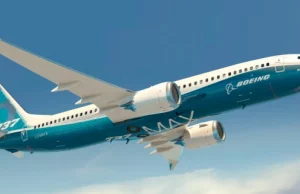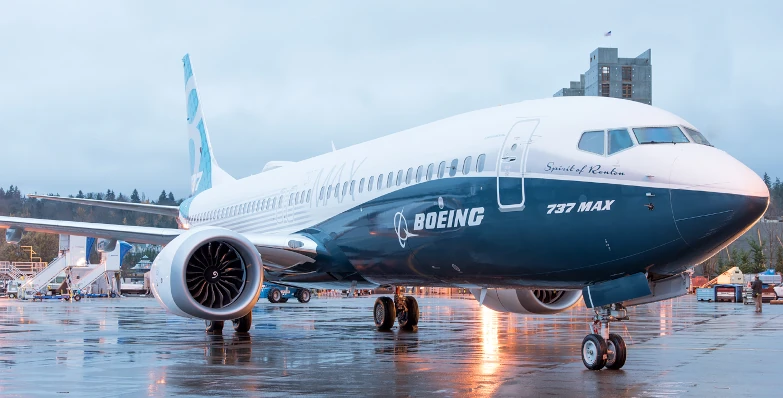
Boeing 737 MAX Family Overview
Introducing the 737 MAX
Boeing is constantly evolving, modernising existing models and developing new ones. Boeing 737 MAX is one of the latest improved series, which replaced the 737 New Generation and quickly became popular. The new aircraft has a number of features and advantages that favourably distinguish it from its predecessors.
At the heart of the 737 MAX is a commitment to innovation and design excellence. With advanced aerodynamics, state-of-the-art engines and advanced avionics systems, the MAX Series aircraft embodies the latest in aerospace technology, delivering unprecedented levels of efficiency and operational capability.
Initially, the developers decided to merely modify the traditional 737NG, but in the end it turned out differently. They had to make so many changes to the classic version that the result was a completely different aircraft – the B737 MAX.
The key feature of Boeing 737MAX is the more powerful CFM International LEAP-1B engine. At the same time, it is more economical in fuel consumption – 12% less. There are many other innovative differences from its predecessors:
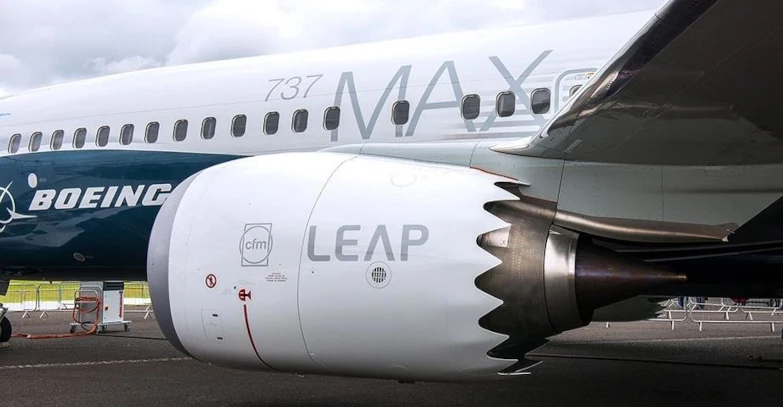
Development History 737 MAX
In the early 2010s, Boeing was considering a new generation of narrow-body aircraft to replace the aging Boeing 737 Next Generation (NG) models.
The idea behind the Boeing 737 MAX was based on using advanced technology and engines to improve fuel efficiency and cost savings for airlines. The main objective was to make the new model more competitive in the market by offering operators the opportunity to reduce fuel costs and increase range.
The major design change for the Boeing 737MAX was the introduction of new CFM International LEAP engines, which promised a significant reduction in fuel consumption compared to previous models.
The idea for the B737 MAX was also motivated by the company’s desire to meet the growing demand for more environmentally friendly and efficient aircraft that meet modern standards of passenger safety and comfort.
As a result of years of research, development and testing, Boeing introduced its first Boeing 737MAX aircraft in 2017, starting with the 737 MAX 8.
The development process for the Boeing 737 MAX was long and multi-year, encompassing not only engineering and technical aspects, but also financial, regulatory and marketing aspects.
Modifications of Boeing 737MAX
The Boeing 737 MAX lineup represents a range of aircraft options, each tailored to specific needs:
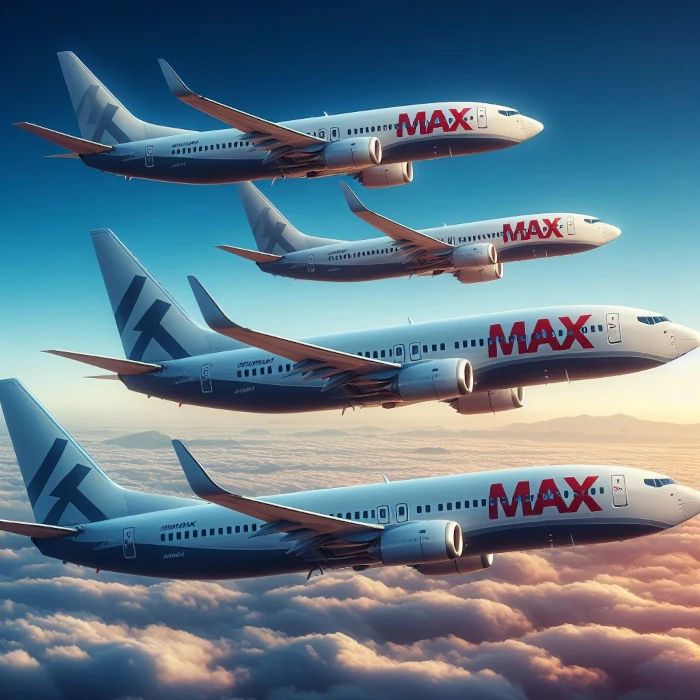
Each of these variants has its own unique characteristics that make them the ideal choice for different market segments and the needs of airlines around the world.
Technical Details B737 MAX
| 737 MAX 7 | 737 MAX 8 | 737 MAX 9 | 737 MAX 10 | ||
|---|---|---|---|---|---|
| Passenger Capacity | 172 (1 class) 138-153 (2 class) |
200 (1 class) 162-178 (2 class) |
220 (1 class) 178-193(2 class) |
230 (1 class) 188-204 (2 class) |
|
| Seat Pitch | 74 cm (1 class, standard) Two-class configuration — 76 cm economy and 91 cm business class |
74 cm (1 class, standard) Two-class configuration — 76 cm economy and 91 cm business class |
|||
| Length | 35.5 m | 39.5 m | 42.2 m | 43.8 m | |
| Wingspan | 35.9 m | ||||
| Height | 12.3 m | ||||
| Cruising Speed | 842 km/h (M 0.79) | ||||
| Maximum Zero Fuel Weight (MZFW) | 62,913 kg | 65,952 kg | 70,987 kg | 72,574 kg | |
| Maximum Takeoff Weight | 80,285 kg | 82,190 kg | 88,314 kg | 89,765 kg | |
| Maximum Landing Weight | 66,043 kg | 69,308 kg | 74,343 kg | 75,931 kg | |
| Range with Full Load | 7,130 km | 6,570 km | 6,570 km (additional fuel tank) |
6,110 km (additional fuel tank) |
|
| Fuel Capacity | 20,730 kg (25,816 liters) | ||||
| Engine Type | 2 × CFM International LEAP-1B. Maximum takeoff thrust 12,700 kgf (12,700×2 = 25,400 kgf). Bypass ratio — 9 | ||||
Boeing 737 MAX: Cabin and Features
When the 737 MAX is compared to its predecessor models, improved cabin features can be seen with the naked eye:
- more headroom, including legroom between seats;
- smoother wall contours;
- improved function of the button designed to control the lighting;
- changes to the air intake grilles, which have improved safety;
- articulated luggage racks that accommodate more luggage;
- speakers in each row, so that the flight attendants’ announcements can be heard
- by every passenger without exception.
737 MAX Seat Map
Regardless of which class of aircraft we are talking about: each of them offers comfortable conditions for flights of varying duration.
Economy
Economy class is quite modest, but not to the detriment of comfort. There are three comfortable seats in a row on one side. There is a place to place your legs, and the backrest can be adjusted to your needs. For passengers not to be bored during the journey, a monitor is built into each seat. You can watch films and perform many other operations on it.
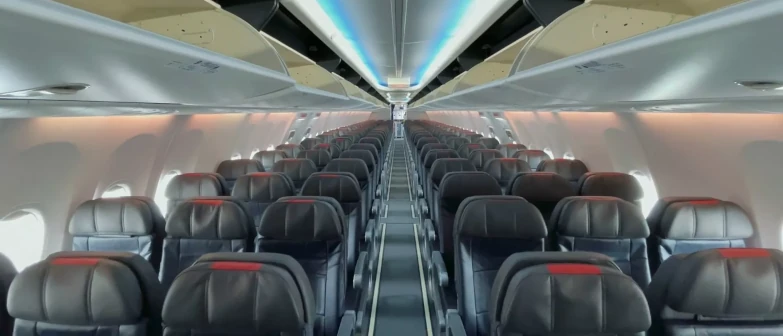
Business
Business Class, as it is easy to guess, is a level above Economy Class. Here, the seats, of which there are two in a row, provide passengers with increased comfort. According to the designers, such seats were developed specifically for Boeing 737 MAX, so you will not find similar solutions in other aircraft models. If a passenger wants to have a full-fledged rest, the seats can be easily turned into a full bed with a length of 198 cm. There is also a 15.6-inch diameter screen in each seat. The choice of meals is wider than in Economy Class. In addition, alcohol is available for those who wish to drink.
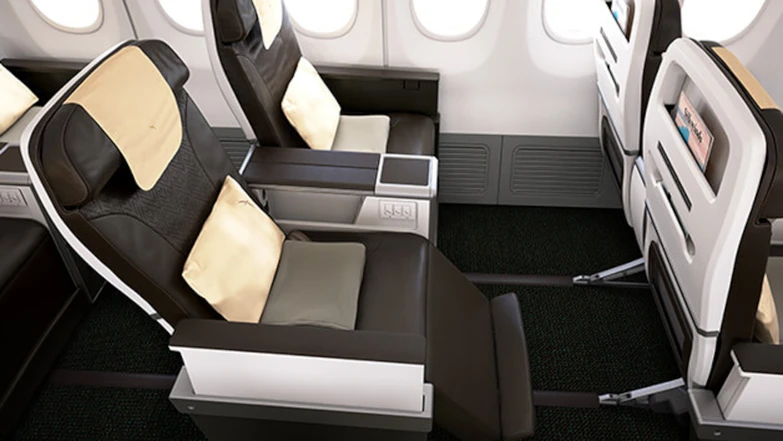
What to Consider When Choosing a Seat in the Cabin
Naturally, the seats in Business Class are much more comfortable. But, this approach is not acceptable for everyone for certain reasons, so it is necessary to individually consider the specific situation and take into account your own preferences.
On the front rows it is customary, as a rule, to place passengers with small children and pregnant women. It is in this location of the aircraft more free space and the fastest service.
But in the tail part of the plane it is better to accommodate those who, due to their health condition, need to visit the lavatory more often than other passengers. However, for those who are sensitive to noise, vibration and vibrations, it is advisable to look for seats in another sector of the aircraft.

